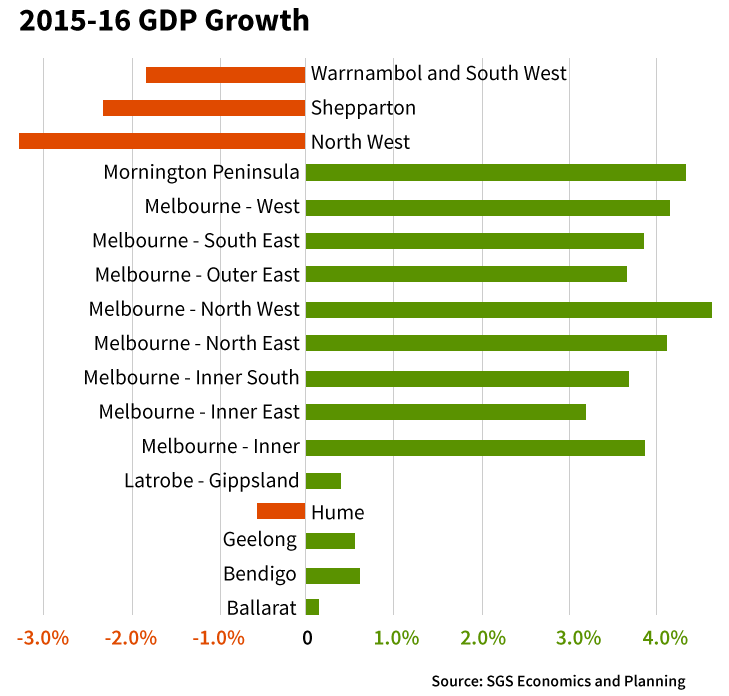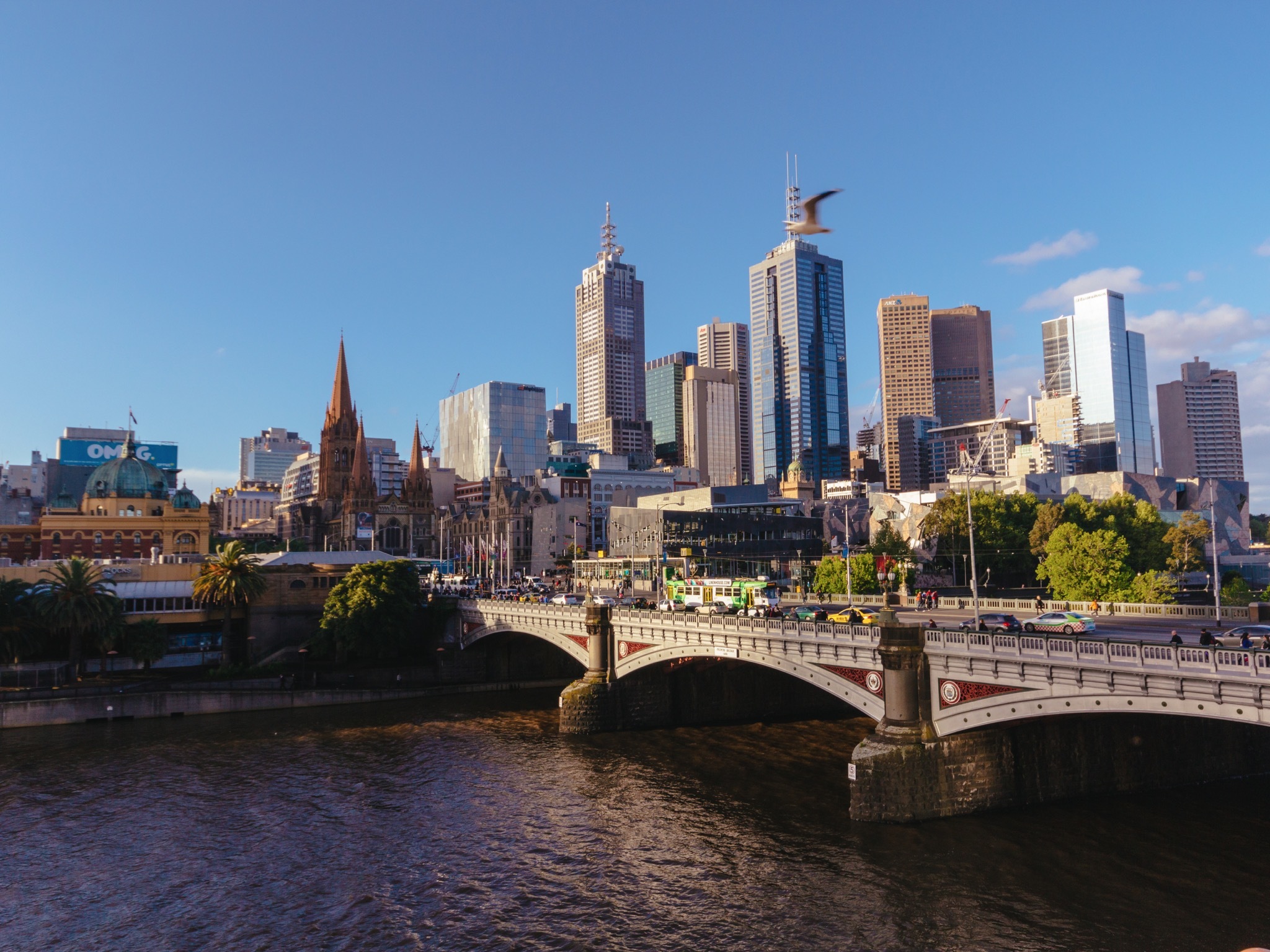Victoria’s economic activity is becoming increasingly centred around Melbourne and the surrounding suburbs 10 kilometres from the city’s centre.
Regional figures compiled by SGS Economics and Planning have revealed that inner Melbourne’s economy grew by 3.9 per cent in the 2015-16 period; with the city’s north-east growing by 4.1 per cent, the north-west by 4.7 per cent, the south-east by 3.9 per cent and the west by 3.9 per cent.
Looking at Victoria’s regional centres, growth was much more subdued or barely present at all.
Ballarat grew just 0.1 per cent, Bendigo 0.4 per cent, Geelong 0.6 per cent and the LaTrobe Valley 0.5 per cent. There was shrinkage of 2.8 per cent in the north-west, 1.4 in Shepparton and 1.2 per cent in Warrnambool and the south-east.
“Victoria’s most important economic asset is what happens within 10 kilometres of the GPO,” said SGS economist Terry Rawnsley.
“Our state is increasingly monocentric, as is Melbourne itself, with 40 per cent of its growth generated in the inner suburbs.”

Until the early 1990s, employment growth in the centre of Melbourne was minimal. However, in the two decades following, employment in the city rocketed, doubling from around 250,000 to close to 500,000.
Rawnsley points to the development of Southbank and the Docklands as major drivers of growth around the city centre, as well as the events that unfolded as a result of the global financial crisis, which had a big impact on regional employment, particularly in manufacturing, as jobs came to be concentrated in the centre.

Moving forward, its likely that the trend of a centralised economy in and around the Melbourne CBD will continue, with very little chance that major employers would relocate to regional areas.
High-value jobs, Mr Rawnsley argued, would need to be located nearby other high-end jobs in order to thrive.
“Maybe you could draw the workers away, but the jobs themselves depend on there being other workers in related jobs nearby. The bulk of them are going to be wedged in the city creating income and creating congestion.”

